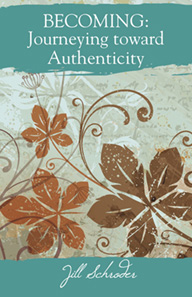“Use it or Lose it.” We’ve all heard the phrase. But what is IT? Mostly I have taken it do be my physical body. I’ve known it’s good to exercise one’s brain as well, but isn’t mental delcine and forgetfulness simply an inevitable part of aging? The answer is a resounding NO, in no uncertain terms.
And it’s never too late!! Older brains can add new pathways, create new connections, synapses, learn new ways… forever!
As I let the possibilities sink in, the whole prospect of growing older transforms. It feels like doors are opening, universes are being unveiled. I already live by the metaphor that life is a journey, or a schoolhouse, or even a dance. We never stop seeing new vistas, learning new lessons or dance steps. But the new information about the neuroplasticity of our brains adds oomph to an already heady adventure :-). I remember the excitement I felt seeing Bruce Lipton talk on the Biology of Belief. We are not determined by our genes. We create our inner environment in large part by what goes on in our brains. What we think and feel actually creates the environment that our genes live in and respond to.
Yikes! You mean the love I feel, those negative judgments that swirl around, the compassion I have for myself and others, the intense hatred I feel at times toward ‘the corporate bad guys’ (or my husband!), the aliveness and gratitude for being alive, the dismal dark and dreary day when everything seems pointless — that is all not just what comprises the flow of life, like the ups and downs of a roller coaster? You mean those thoughts and emotions are creating an internal environment that actually has an affect? Well that’s exactly right. They do. They affect our immune system, our chemistry, digestion… the list goes on. Our minds (thoughts and feelings) affect our brains, which affect our entire system.
Hence the title of the post. We can use our minds to change our brains! I can learn, and practice, cultivating the ‘good stuff’ and lowering the volume of the ‘yucky stuff’, and it’s not just nicer that way, the ripple out effects are whopping. I’ve been doing a number of new practices since my work with Jean Houston, and the affect is palpable. More about this in later posts.
So how does this happen? How can we use our minds to change our brains? Our old patterns, beliefs, many of them not particularly useful or loving, were created early and lie deeply grooved in our brains. We are run by our early survival strategies. That’s simply true. But things do not have to stay that way. It takes practice and intention to change our brain, but it’s possible, and the rewards are quite impressive!
In recent months (actually years, but the ideas are now definitely mainstream), neuroscientists have been learning more and more about the phenomenal plasticity of that three pound tofu-like blob of stuff we call a brain. Numerous scholarly and popular books have come out on the subject. A classic is Norman Doidge’s The Brain that Changes Itself. 
A neuroscientist who also has a deep spiritual dimension is Rick Hanson, and his website is a rich resource. I suggest you have a browse, and even consider signing up for Rick’s weekly note, Just One Thing, a free e-newsletter that suggests a simple practice each week that will bring you more joy, more fulfilling relationships, and more peace of mind and heart. And it will affect your immune system too!
I’ve also just signed up for a free video interview series that Rick is offering, called, The Loving Brain, which focuses on the mind-brain-body connection in general, and relationships in particular. Relationships are a huge source of love and joy, but also a major area for conflict and struggles. So using our mind to change our brain and heart and gut around significant relationships seems like a fine opportunity. I love listening to TED talks and interesting interviews while I’m puttering in the kitchen or folding the laundry 🙂 Maybe you will too.
In closing, let’s come back to the phase itself. What response do the words Use It or Lose It evoke in you, or responses? The phrase has been around for ages; I grew up with it; it’s even one of the essays in BECOMING. For me, it’s both encouraging, but also a bit daunting, I could say taunting. There’s motivation, yes, but also a veiled threat. The positive version goes like this: Use it because it’s fun, and you won’t lose it. What we appreciate appreciates! Then there’s the other side: You better watch out, if you don’t use it, by golly you’ll lose it. Fear can be an effective motivator as well, but it leaves a very different taste in your mouth, and chemicals in your body.
Changing our brain in the direction of love, compassion, caring for ourselves and others — that’s the direction we need, so why not go for it! Use “IT” because this is our one wild and precious life (Mary Oliver). Let’s love and cherish and live it!
Here’s to new grooves, synaptic connections in our brains! The effect on us personally is important, AND the planet desparately needs people in peace and wellbeing, not greed and conflict.
Comments and questions are most welcome.
More blessings, joy, love, relaxation and a happy summer to you!
Jill Schroder is the author of BECOMING: Journeying Toward Authenticity. BECOMING is an invitation for self-reflection, and to mine our memorable moments for insights, meaning, and growth. Check the website for a sample chapter, or see the reviews to get a flavor for the volume. Follow me on Twitter, let’s be friends on Facebook ![]()


